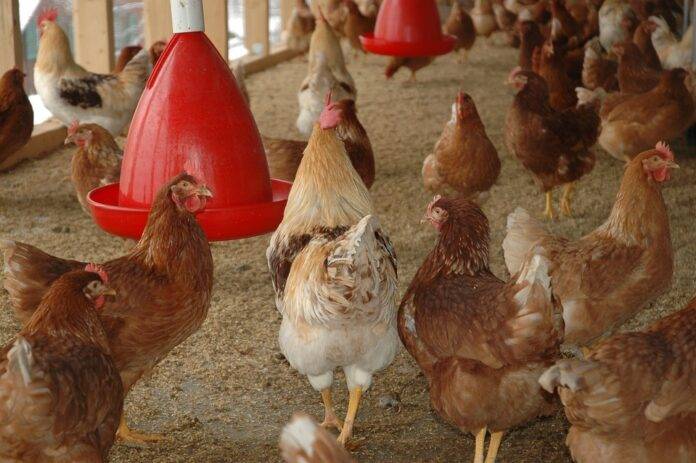Introduction
The poultry industry is a crucial component of the global food supply chain, contributing significantly to protein sources for millions worldwide. However, it faces numerous challenges, including disease outbreaks, fluctuating feed prices, and changing consumer preferences. As a result, ensuring supply chain resilience is imperative for market stability. This report outlines the top 10 poultry supply chain resilience strategies that industry stakeholders can implement to navigate uncertainties effectively.
1. Diversification of Supply Sources
Diversification of supply sources is a fundamental strategy for building resilience. By sourcing raw materials and inputs from various suppliers, poultry producers can mitigate risks associated with supply disruptions. For example, during the COVID-19 pandemic, many poultry producers faced challenges due to reliance on single-source suppliers. Companies that had diversified their supply chains were better positioned to maintain production levels.
Financially, companies that diversify can often negotiate better pricing and terms. According to the Food and Agriculture Organization (FAO), poultry feed accounts for 70% of production costs. By securing multiple feed suppliers, producers can reduce costs and stabilize their operations.
2. Implementing Technology and Automation
The use of technology and automation in the poultry supply chain enhances efficiency and reduces operational risks. Technologies such as IoT (Internet of Things) devices, AI (Artificial Intelligence), and blockchain can provide real-time data and traceability throughout the supply chain.
For instance, automated feeding systems can optimize feed usage, reducing waste and lowering costs. A case study involving a major poultry producer revealed that implementing automation led to a 15% reduction in feed costs. Additionally, blockchain technology can enhance traceability, ensuring that products meet safety standards and regulatory requirements, thus building consumer trust.
3. Strengthening Logistics and Distribution Networks
Efficient logistics and distribution networks are vital for ensuring that poultry products reach markets promptly. Building strong relationships with logistics partners and investing in transportation infrastructure can significantly enhance supply chain resilience.
During the supply chain disruptions caused by the pandemic, companies that had strong logistics networks were able to adapt quickly. For example, a leading poultry company increased its distribution capabilities by 25% by partnering with regional logistics firms, enabling them to reach new markets and maintain product availability.
4. Enhancing Biosecurity Measures
Biosecurity is a critical aspect of poultry production, particularly in preventing disease outbreaks. Implementing strict biosecurity measures can protect flocks from diseases such as avian influenza and Newcastle disease, which can severely impact production.
Financially, investing in biosecurity can save producers millions. The USDA estimates that an avian influenza outbreak can cost the poultry industry upwards of $3 billion in losses. Strategies include regular health monitoring, controlling access to farms, and maintaining hygiene standards.
5. Building Strong Relationships with Stakeholders
Collaboration with stakeholders, including suppliers, distributors, and retailers, is essential for a resilient supply chain. Building strong relationships can facilitate better communication and responsiveness to market changes.
For example, a cooperative model where poultry producers work closely with feed suppliers can lead to shared best practices and cost savings. Producers who engage with their supply chain partners often report improved responsiveness to changing market demands and reduced lead times.
6. Developing Contingency Plans
Having contingency plans in place is crucial for addressing potential disruptions. These plans should outline steps to be taken in various scenarios, such as supply shortages, disease outbreaks, or natural disasters.
A poultry producer that faced a feed shortage due to a drought implemented its contingency plan, sourcing feed from alternative suppliers and adjusting production schedules. This proactive approach minimized losses and ensured continued operation.
7. Investing in Sustainable Practices
Sustainability is increasingly important to consumers and regulatory bodies. Investing in sustainable practices can enhance supply chain resilience while also appealing to environmentally conscious consumers.
For instance, adopting practices such as reducing water usage and optimizing energy consumption can lead to lower operational costs. According to a report by the World Bank, the poultry sector can achieve a 25% reduction in greenhouse gas emissions through sustainable practices, ultimately benefiting both the environment and the bottom line.
8. Monitoring Market Trends and Consumer Preferences
Staying informed about market trends and consumer preferences is vital for making strategic decisions. Utilizing market research and analytics can help poultry producers adapt to changing demands.
For example, a shift towards organic and free-range poultry has been observed in recent years. Producers who have monitored these trends and adjusted their offerings accordingly have seen increased sales and market share. According to Statista, the organic poultry market is projected to reach $3 billion by 2025, highlighting the importance of aligning production with consumer preferences.
9. Training and Development of Human Resources
Investing in the training and development of employees is essential for maintaining a resilient supply chain. Skilled workers are better equipped to respond to challenges and implement new technologies effectively.
A poultry company that invested in employee training reported a 20% increase in productivity. Providing ongoing education and resources ensures that staff can adapt to new processes and industry changes, ultimately contributing to overall supply chain resilience.
10. Utilizing Data Analytics for Decision-Making
Data analytics plays a crucial role in optimizing supply chain processes. By leveraging data, poultry producers can make informed decisions regarding production, inventory management, and market strategies.
For example, predictive analytics can forecast demand, allowing producers to adjust production schedules accordingly. A poultry producer that implemented data analytics saw a 30% reduction in excess inventory, leading to significant cost savings.
Conclusion
The poultry industry is at a crossroads, facing numerous challenges that threaten supply chain stability. By implementing the strategies outlined in this report, industry stakeholders can enhance their resilience and ensure market stability. Diversifying supply sources, adopting technology, strengthening logistics, and investing in sustainability are just a few of the crucial steps that can be taken to navigate uncertainties effectively. As the industry continues to evolve, proactive strategies will be essential for maintaining a robust and resilient poultry supply chain.
[Read More: Global Poultry Industry Report 2025: Trends, Challenges, and Future Outlook Across the Value Chain]




